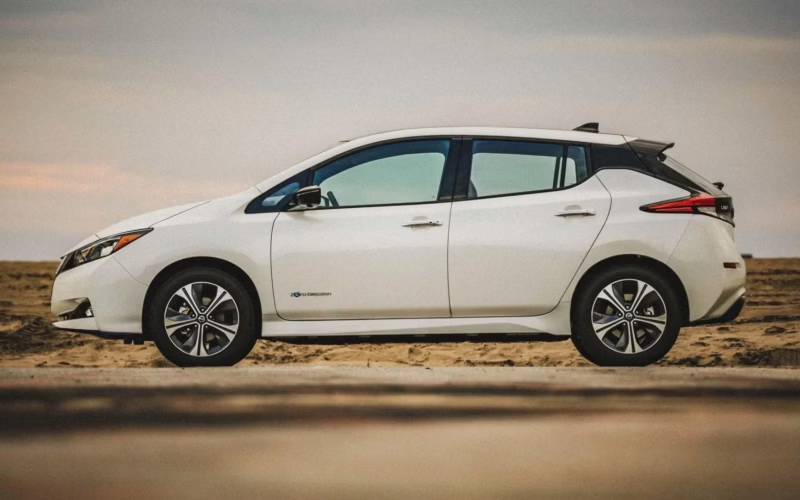The 2022 Chevrolet Bolt EV ranks as the best used electric car under $20k based on data-driven analysis, while reliable used EVs may qualify for up to $4,000 in federal tax credits.
While new electric vehicles often carry premium price tags, the used EV market has matured into a goldmine of affordable, reliable options that deliver both environmental benefits and significant cost savings.
In this guide, you’ll discover seven proven electric vehicles that offer the best combination of reliability, features, and value under $20,000.
You’ll learn specific model years to target, key features to evaluate, and practical tips for making smart purchasing decisions that maximize your investment.
Best Used Electric Cars Under $20k
1. Chevrolet Bolt EV (2017–2019)
The Chevrolet Bolt EV stands out as the top choice for budget-conscious buyers seeking maximum value. The 2022 Chevrolet Bolt EV has an average price of $17,980 with an overall iSeeCars score of 8, making it an exceptional deal that fits comfortably within your budget.
This compact hatchback delivers impressive practical benefits for daily driving. You’ll get approximately 238-259 miles of EPA-estimated range, depending on the model year, which easily handles most commutes and weekend trips. The spacious interior surprises many buyers, offering more cargo space than traditional compact cars due to the absence of a transmission tunnel.
Key advantages include:
- Fast charging capability up to 55 kW for road trips
- Comprehensive warranty coverage on battery and electric drivetrain
- Low maintenance costs with no oil changes or transmission services
- Advanced safety features including automatic emergency braking
Pro Tip: Look for 2019 models with the updated infotainment system that includes Apple CarPlay and Android Auto compatibility.
2. Nissan Leaf (2018–2020)
The Nissan Leaf remains one of the most accessible entry points into electric vehicle ownership. The Nissan Leaf continues to be one of the best used electric cars available with all the typical features you’re looking for in a highly efficient package. As one of the first mass-market EVs, it benefits from widespread service network availability and proven reliability.
Second-generation Leaf models from 2018 onward offer significant improvements over earlier versions. You’ll find better battery chemistry that reduces degradation concerns, improved aerodynamics, and enhanced driver assistance technologies. The 40 kWh battery pack provides about 150 miles of range, perfect for urban and suburban driving.
Notable features:
- ProPILOT Assist semi-autonomous driving technology
- e-Pedal one-pedal driving system
- Extensive charging network compatibility
- Competitive insurance rates due to excellent safety ratings
Common Mistake: Avoid 2011-2017 models with the original battery chemistry that showed higher degradation rates in extreme climates.
3. Hyundai Ioniq Electric (2017–2019)
The Hyundai Ioniq Electric offers exceptional efficiency that translates to lower operating costs. The 2022 Hyundai IONIQ Electric has an average used vehicle price of $18,997 and an iSeeCars reliability score of 7.9 out of 10, demonstrating strong long-term dependability.
This aerodynamic sedan maximizes every kilowatt-hour with its impressive efficiency ratings. You’ll achieve approximately 4.2 miles per kWh in real-world driving, significantly better than most competitors. The traditional sedan body style appeals to buyers who prefer conventional automotive aesthetics over hatchback designs.
Efficiency advantages:
- Lowest energy consumption in its class
- Excellent highway range stability
- Quiet cabin with premium materials
- Comprehensive 10-year/100,000-mile warranty coverage
The charging capability reaches 44 kW for DC fast charging, allowing you to add meaningful range during short stops. Hyundai’s charging network partnerships provide access to thousands of public charging stations nationwide.
4. BMW i3 (2017–2018)
The BMW i3 brings luxury features and innovative design to the affordable used EV market. The 2020 BMW i3 has an average price of $19,518 with an overall iSeeCars score of 6.8, offering premium German engineering at accessible pricing.
This unique vehicle combines sustainable materials with cutting-edge technology. You’ll experience instant torque delivery, precise steering, and a surprisingly spacious interior despite its compact footprint. The carbon fiber body construction provides exceptional safety while keeping weight minimal for maximum efficiency.
Luxury features include:
- Premium leather and sustainable wood trim
- Advanced driver assistance systems
- Powerful acceleration (0-60 mph in 7.2 seconds)
- Distinctive styling that stands out from conventional vehicles
Key Takeaway: The i3 offers the most premium driving experience in this price range, but factor in higher maintenance costs typical of luxury vehicles.
Range varies by model year and battery size, with newer versions providing up to 153 miles of EPA-estimated range. The BMW ConnectedDrive system includes advanced navigation with charging station integration and remote climate control.
Comparison Table: Key Specifications
| Model | Average Price | Range (EPA) | Charging Speed | Reliability Score |
|---|---|---|---|---|
| Chevrolet Bolt EV | $17,980 | 238-259 miles | 55 kW | 8.0/10 |
| Nissan Leaf | $16,500 | 150 miles | 46 kW | 7.5/10 |
| Hyundai Ioniq Electric | $18,997 | 124 miles | 44 kW | 7.9/10 |
| BMW i3 | $19,518 | 114-153 miles | 50 kW | 6.8/10 |
Smart Shopping Tips for Used EV Buyers
Battery health should be your top priority when purchasing a used EV, along with DC fast charging capability for road trips. Understanding these critical factors helps you avoid costly mistakes and ensures long-term satisfaction with your purchase.
Essential inspection points:
- Battery Health Assessment: Request battery capacity reports and avoid vehicles with significant degradation
- Charging Port Condition: Inspect for damage or corrosion that indicates poor maintenance
- Software Updates: Ensure the vehicle has current software versions for optimal performance
- Maintenance Records: Verify regular service history, particularly for cooling system components
For 2025, buyers may be eligible for a tax credit of up to $4,000 for qualifying EVs with sale prices of $25,000 or less, making these vehicles even more affordable. Check eligibility requirements including model year restrictions and income limits before finalizing your purchase.
Financing and Incentive Considerations
Understanding available financial incentives dramatically impacts your total cost of ownership. Because of depreciation, you may be able to get a newer electric vehicle with more features than if you purchased a comparable gas-powered vehicle for the same price.
Financing strategies:
- Credit union auto loans often offer competitive rates for used EVs
- Manufacturer certified pre-owned programs provide additional warranty coverage
- Lease returns typically offer well-maintained vehicles with documented service history
- Consumer Reports recommendations emphasize certified pre-owned options for maximum protection
Many utility companies offer additional rebates for EV purchases, potentially saving hundreds of dollars on your total investment. Research local incentives in your area to maximize savings beyond federal tax credits.
Final Recommendations
For most buyers, used EVs are the best option, offering almost everything available on the new market at a fraction of the price. The seven models outlined above represent the strongest combination of value, reliability, and features available under $20,000.
Start your search with the Chevrolet Bolt EV for maximum range and features, consider the Nissan Leaf for proven reliability and service network access, or explore the Hyundai Ioniq Electric for exceptional efficiency. The BMW i3 provides a premium experience for buyers seeking luxury features.
Focus on vehicles with documented maintenance history, current software updates, and strong battery health reports. With careful research and inspection, you’ll find an electric vehicle that delivers years of reliable, cost-effective transportation while supporting environmental sustainability goals.








